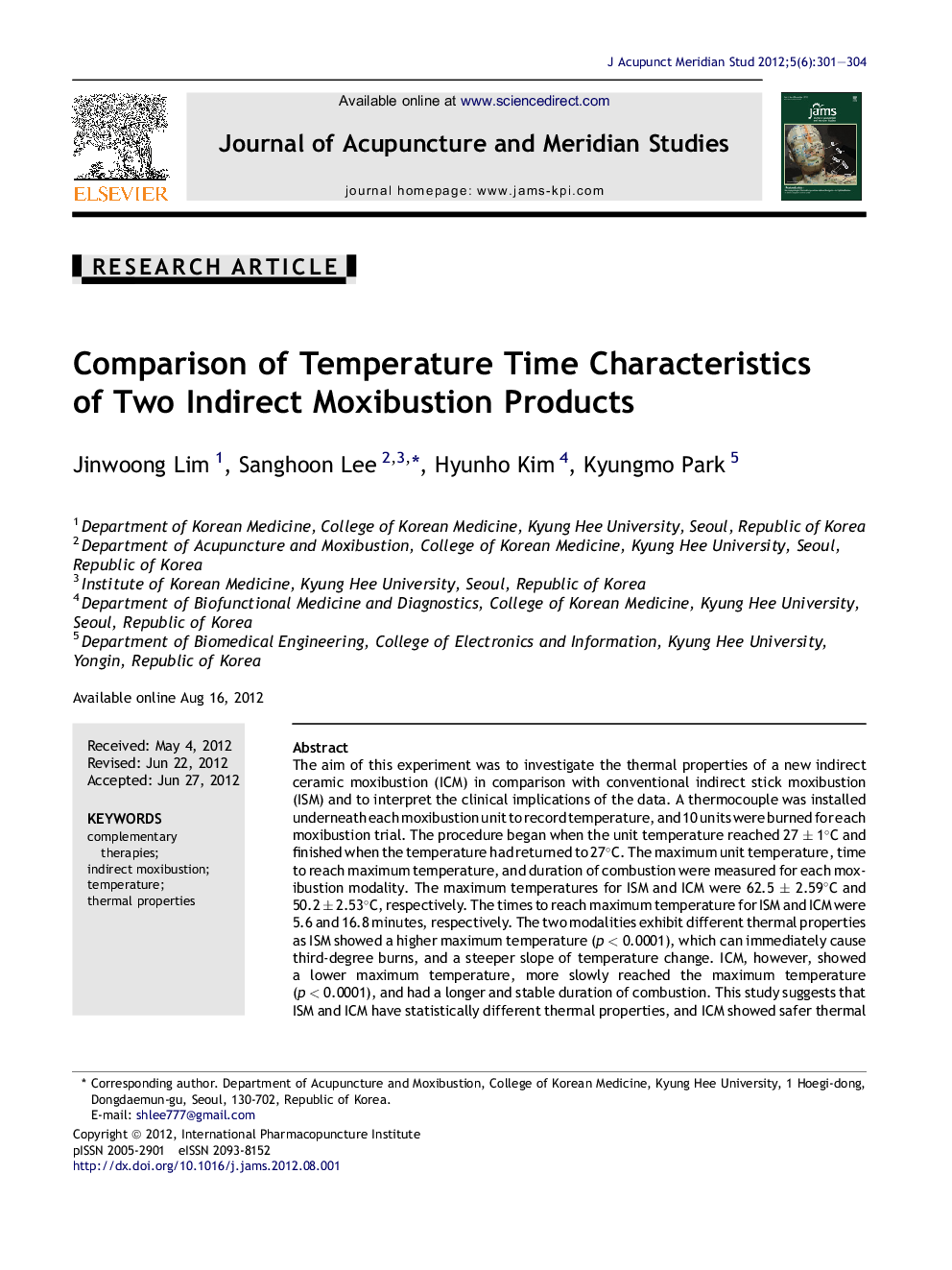| Article ID | Journal | Published Year | Pages | File Type |
|---|---|---|---|---|
| 3098964 | Journal of Acupuncture and Meridian Studies | 2012 | 4 Pages |
The aim of this experiment was to investigate the thermal properties of a new indirect ceramic moxibustion (ICM) in comparison with conventional indirect stick moxibustion (ISM) and to interpret the clinical implications of the data. A thermocouple was installed underneath each moxibustion unit to record temperature, and 10 units were burned for each moxibustion trial. The procedure began when the unit temperature reached 27 ± 1°C and finished when the temperature had returned to 27°C. The maximum unit temperature, time to reach maximum temperature, and duration of combustion were measured for each moxibustion modality. The maximum temperatures for ISM and ICM were 62.5 ± 2.59°C and 50.2 ± 2.53°C, respectively. The times to reach maximum temperature for ISM and ICM were 5.6 and 16.8 minutes, respectively. The two modalities exhibit different thermal properties as ISM showed a higher maximum temperature (p < 0.0001), which can immediately cause third-degree burns, and a steeper slope of temperature change. ICM, however, showed a lower maximum temperature, more slowly reached the maximum temperature (p < 0.0001), and had a longer and stable duration of combustion. This study suggests that ISM and ICM have statistically different thermal properties, and ICM showed safer thermal properties and a more stable heating pattern. Randomized controlled trials involving various moxibustion modalities are required for further clinical evaluation.
